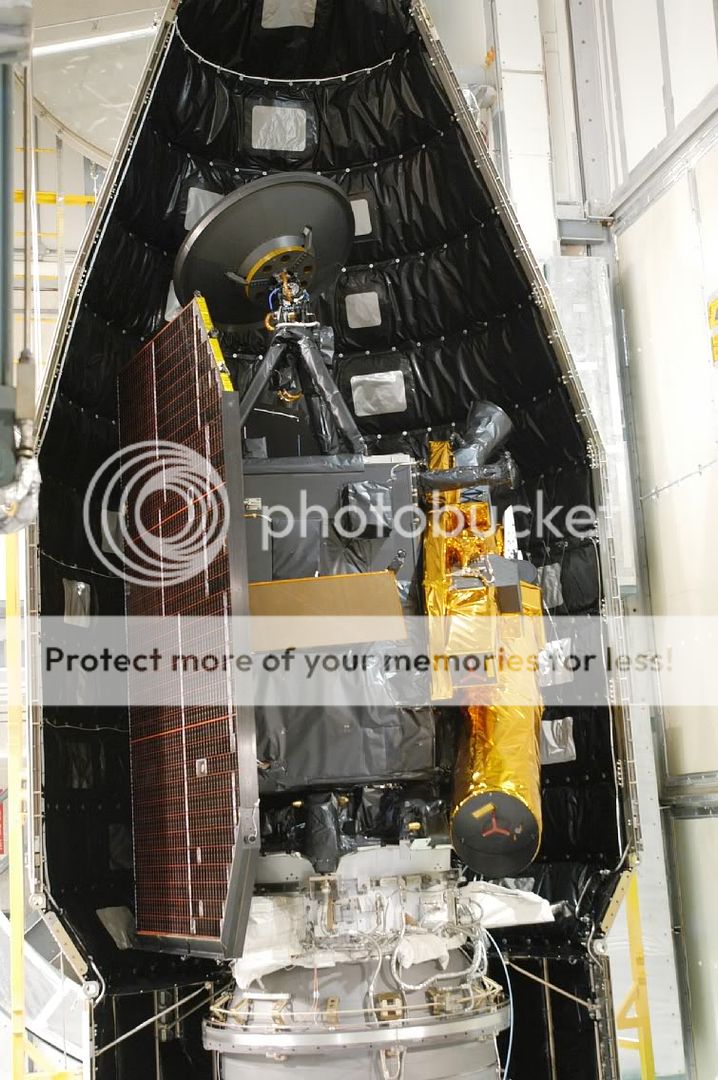M
MeteorWayne
Guest
I suspect a contact binary with an infilled neck...it makes more sense from a dynamic physical standpoint.
Nov. 4, 2010 | 09:24 PDT | 16:24 UTC
By Emily Lakdawalla
Those of you who follow my blog must have known this was coming: now that I got all five new Deep Impact images of Comet Hartley 2 posted and explained, I had to make an animation. Here they are. I rotated them all counterclockwise by a quarter turn and aligned the frames, but otherwise did no processing.

Animation of Deep Impact close-approach images
About an hour after its closest approach of Hartley 2, Deep Impact downlinked five precious images taken during the nearest part of its flyby. The top two images were taken 82 and 16 seconds before closest approach, and the bottom three 18, 57, and 117 seconds after closest approach (image times are 13:58:07, 13:59:13, 13:59:47, 14:00:26, and 14:01:26 UTC on November 4, 2010). They show a very active comet with numerous jets. Credit: NASA / JPL / UMD / animation by Emily Lakdawalla

Sure, no copyright on them!3488":3gha7ax5 said:Do I have your permission to download them??
NASAtelevision | November 04, 2010
NASA's EPOXI mission spacecraft successfully flew past comet Hartley 2 on Thursday, Nov. 4, 2010. Scientists say initial images from the flyby provide new information about the comet's volume and material spewing from its surface. EPOXI is an extended mission that uses the already in-flight Deep Impact spacecraft.
planetsocblog | November 04, 2010
Daniel Macháček created this smooth animation from the five images of Hartley 2 released by the Deep Impact team immediately following its flyby on November 4, 2010. He used Squirlz Morph. Time in the animation is five times faster than the actual speed of the flyby.
JPLnews | November 04, 2010
Applause erupted in EPOXI Mission Control at JPL after the spacecraft transmitted close-up images of comet Hartley 2.
...By Mike Wall
SPACE.com Senior Writer
posted: 04 November 2010
07:06 pm ET
A spacecraft's close encounter with a comet today (Nov. 4) went off without a hitch, and the data it's beaming down is already surprising scientists.
NASA's Deep Impact probe zipped to within 435 miles (700 kilometers) of Comet Hartley 2 at 10:01 a.m. EDT (1401 GMT) today (Nov. 4), and it sent to Earth the first five close-up photos of the peanut-shaped comet about an hour later.
Scientists are already poring over these images, as well as thousands of others Deep Impact has taken of the comet since early September. The spacecraft's observations paint a picture of a strange comet that's tremendously active for its small size, with carbon-dioxide-fueled jets spouting voluminously from a rough, textured surface. [First close-up photos of Comet Hartley 2]
Researchers hope the flyby — one of just five missions that have photographed a comet's nucleus up-close — will help them gain a better understanding of comet structure and behavior. Since comets are leftovers from the solar system's early days, such knowledge could reveal a great deal about how our cosmic neighborhood came to be, scientists have said.
But researchers stressed that there's still a great deal of work to be done, as Deep Impact has already delivered a mountain of data and will keep pouring it on through late November.
"The engineers did a fantastic job of getting us data," said Mike A'Hearn of the University of Maryland, principal investigator of Deep Impact's comet flyby mission, which NASA calls EPOXI. "The scientific work is just beginning now."

jumpjack2":1b0l8cjq said:I read somewhere that these are just medium resolution images, and hi-res images are currently being downloaded!! :shock:
alpha_centauri":177e5f9d said:jumpjack2":177e5f9d said:I read somewhere that these are just medium resolution images, and hi-res images are currently being downloaded!! :shock:
Yeah I gathered from what was said at the press conference that the hi-res was out of focus and so image processing was going to take longer.




